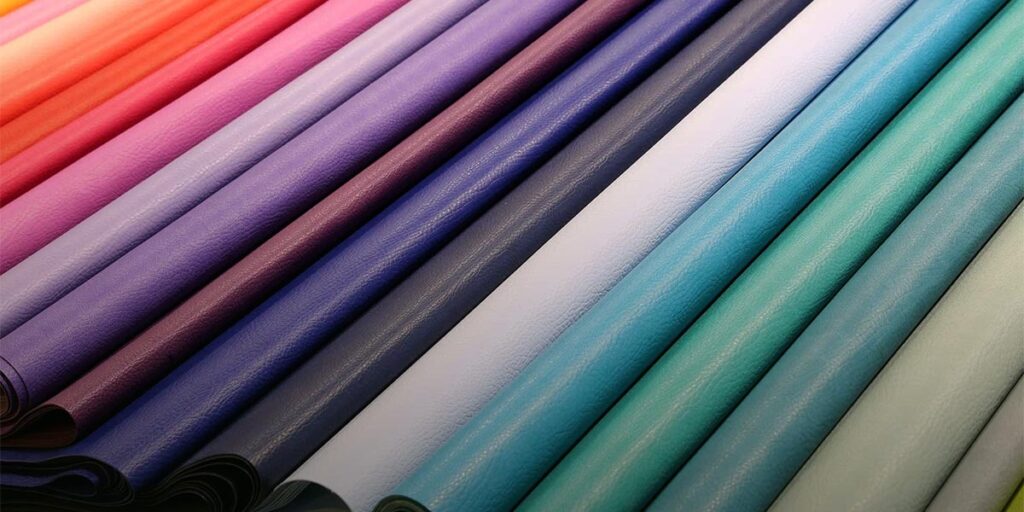Vegan leather, also known as synthetic leather or faux leather, has emerged as a sustainable alternative to traditional animal leather. While it initially gained popularity in the fashion industry, its versatility has led to applications far beyond the world of fashion. In this article, we’ll take an in-depth look at the many facets of vegan leather, its composition, and how it is transforming various industries.
Understanding Vegan Leather
Vegan leather is a cruelty-free alternative to traditional leather, which is typically made from animal hides. It is designed to replicate the look and feel of real leather while avoiding the use of animal-derived materials. Vegan leather is composed of various synthetic or plant-based materials, and its composition can vary depending on the manufacturer.
Composition of Vegan Leather
Vegan leather can be made from a variety of materials, each with its unique characteristics. Some common materials used in the production of vegan leather include:
- Polyurethane (PU): PU leather is one of the most common types of vegan leather. It involves applying a polyurethane coating to a fabric base, often made from polyester. PU leather is known for its durability and versatility.
- Polyvinyl Chloride (PVC): PVC leather is another widely used vegan leather material. It is created by adding a layer of PVC to a fabric base. PVC leather is known for its water resistance and ease of maintenance.
- Piñatex: Piñatex is a sustainable vegan leather made from the fibers of pineapple leaves. It is not only eco-friendly but also biodegradable, contributing to reduced waste in the fashion industry.
- Mushroom Leather (Mycelium): Mycelium-based vegan leather is produced using the root system of mushrooms. It is gaining recognition as an eco-friendly option that combines durability with sustainability.
The Benefits of Vegan Leather
Vegan leather offers a wide range of benefits that make it an attractive choice for both consumers and manufacturers:
- Cruelty-Free: Vegan leather production does not involve the use of animal products or harm to animals, aligning with ethical and humane principles.
- Sustainability: Many vegan leather materials, such as Piñatex and mushroom leather, are sustainable and environmentally responsible, reducing the fashion industry’s ecological footprint.
- Durability: High-quality vegan leather can rival the durability of traditional leather, ensuring that products made from it last for a long time.
- Wide Variety: Vegan leather comes in various textures, colors, and finishes, providing designers with ample creative possibilities.
- Affordability: Vegan leather products are often more budget-friendly than their animal leather counterparts, making them accessible to a wider range of consumers.
Vegan Leather in Fashion
The fashion industry was among the first to embrace vegan leather as a sustainable and ethical alternative. Today, you can find a wide range of vegan leather products, including shoes, bags, jackets, and of course, wallets. Vegan leather’s aesthetic appeal and ethical advantages have made it a staple in fashion collections worldwide.
Vegan Leather Beyond Fashion
The versatility of vegan leather extends well beyond fashion. It has found applications in various industries:
1. Interior Design
Vegan leather is increasingly used in interior design for upholstery, furniture, and home accessories. Its aesthetic appeal, durability, and easy maintenance make it a popular choice for eco-conscious homeowners.
2. Automotive Industry
Car manufacturers are incorporating vegan leather into vehicle interiors, offering customers a cruelty-free and sustainable option. Vegan leather seats and trim are becoming common features in modern automobiles.
3. Electronics
Vegan leather is used to create stylish and eco-friendly phone cases, laptop sleeves, and tablet covers. These accessories not only protect your devices but also make a fashion statement.
4. Home Goods
You can find vegan leather in a wide range of home goods, including placemats, coasters, and decorative items. These products add a touch of sophistication to your living space while contributing to sustainability.
The Sustainability Aspect
Vegan leather contributes to sustainability by reducing the demand for traditional leather production, which is resource-intensive and often involves animal farming. The production of vegan leather generally has a lower environmental footprint, making it an eco-friendly choice for conscious consumers.
Conclusion
Vegan leather has emerged as a versatile and sustainable alternative to traditional leather, impacting various industries beyond fashion. Its ethical advantages, along with the benefits of cruelty-free production and environmental responsibility, are driving its growing popularity. As innovation in vegan leather continues, it promises a future where style, ethics, and sustainability coexist harmoniously.
If you’re interested in exploring more about vegan leather applications and discovering stylish vegan leather products, visit our blog. There, you’ll find in-depth articles, product recommendations, and insights into the world of sustainable design and innovation.
Join us in celebrating the versatility of vegan leather and its positive impact on design, sustainability, and the world we live in.
.
.
Introducing West where slim wallets are reinvented. Born in Germany with the mission of making style functional, we craft premium quality vegan leather into slim lifestyle essential. Check out our collection of wallets today and start your journey towards style and comfort!

